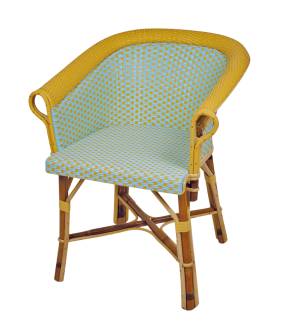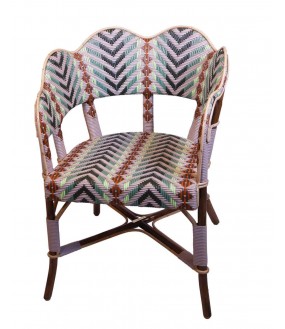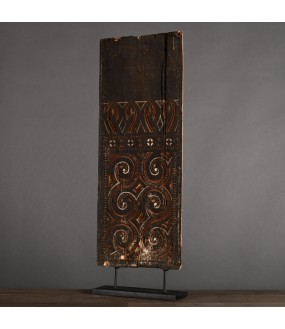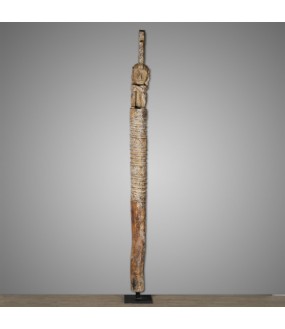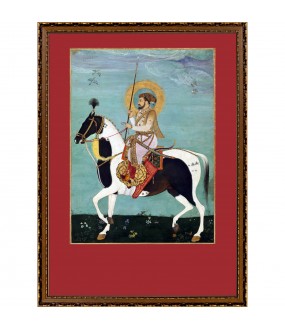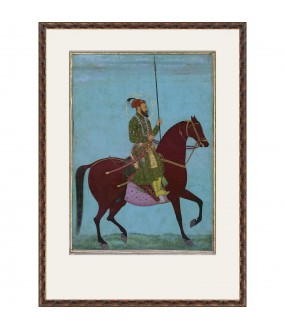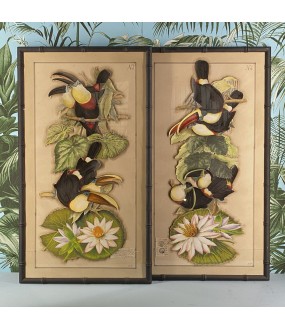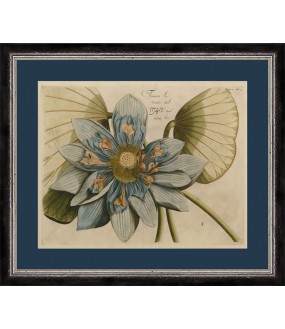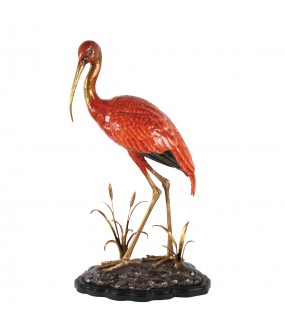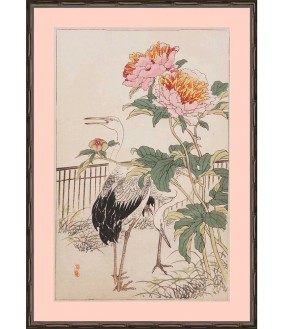COLLECTION
Welcome to the enchanting world of Maison Arteslonga, where styles and eras converge to create captivating harmony.
To find out more about the world of Maison Arteslonga..
Immerse yourself in a world where romance and glamour blend with French craftsmanship, always at the forefront of trends. With Arteslonga, discover a French way of life infused with intimate memories and the poetic evocation of objects, places, and unique stories.
Make a statement of difference, uniqueness, and inspiration in your interior decoration with Arteslonga. Each selected item bears witness to craftsmanship, carrying within it the memories of artists and artisans.
Furniture, decorative objects, and unique art pieces are carefully curated to create a distinctive interior space, blending styles, eras, and universes. Whether for indoors or outdoors, our collection offers exclusive retro and vintage furniture, curiosities, magnificent handmade rugs, and decorative objects to elevate your space.
Illuminate your interior with our selection of lamps, chandeliers, and unique lighting pieces, crafted by artisans. From contemporary paintings to vintage fashion accessories, from maritime motifs to paper artworks, each piece tells a story, evokes a style, and awakens the senses.
At Arteslonga, we share with you the love for craftsmanship and the passion transmitted by master artisans and artists. Our collection is constantly renewed, inviting you to discover new treasures and rediscover the past through a contemporary lens.
Discover decorative styles ranging from baroque to Art Deco, from the roaring twenties to the 1970s and beyond. From watercolors to wooden sculptures, from oils to lithographs, our offering reflects the diversity and richness of artistic movements throughout time.
Arteslonga invites you to create a space that reflects your personality, where each object tells a story and evokes an emotion. Explore our collection and let yourself be inspired by the magic of art and design.
Experience Arteslonga, where each piece is a work of art in its own right, where every detail invites you to dream and travel through time and space.
"Existing is a fact, Living is an Art." Welcome to Arteslonga, the French house of decoration and art of living.
Arteslonga, French Home Decoration and Lifestyle House, offers a unique selection of decorative objects and antique, vintage, retro and modern or shabby chic furniture, as well as works of art and crafts selected for their aesthetic, elegance and originality.
With a click, you can buy original modern or vintage decorative objects, and discover romantic and glamorous world of interior design, a French knowledge, always at the forefront of the trend.
Arteslonga is a spirit, a way of life, inspired by a passion for art, elegance and authentic products.
Arteslonga is born of an aesthetic and sensory desire, linked to intimate memories and the evocative impact of an object or place. It’s to transmit quality, a memory, and to make life different, unique, inspiring ...
For an international clientele who loves creativity, uniqueness and authenticity Arteslonga inspire a better, more memorable living.
All objects of decoration selected by Arteslonga are the testimony of artists and craftsmen expertise. They contain the memory of the gesture.
The richness and variety of antiques are complemented by a range of contemporary works. Arteslonga share with you the love of passion conveyed by these craftsmen and artists.
Furniture, home decoration objects and unique pieces of art are harmoniously matched, mixing styles, eras and origins to make your home interior unique.
Discover on Arteslonga:
- Exclusive antique, retro, vintage and shabby chic furniture: office chair, bedside table, bookshelf ...
- Unique antique and vintage decorative objects and genuine curiosity,
- Furniture and decorative items for indoor and outdoor, to decorate your winter garden, your patio or garden,
- Retro kitchen items, decorative items for your table,
- Vintage lighting, unique pieces such as lamps or chandeliers for your home decor,
- Elements of ornamentation, decorative crafts, a selection of beautiful hand-made rugs from there and elsewhere for your interior design,
- Pieces of fine art and graphic art, paintings and works on paper,
- Vintage Women's fashion accessories
- A selection of contemporary artist and arts and crafts
You will discover more than two thousand objects traveling through a century of history.
The selection begins in the era of Napoleon III and continues until the 20s, 50s, 1970s to today! The styles of Louis XV, Louis XVI or Louis XIII are present as well as the Baroque period.
Vintage furnishings, vintage designs and other home accessories are also exhibited on Arteslonga. Adorn your walls with paintings alike still lifes or marine or beautiful wall papers hand painted.
A watercolor or oil will harmonize with engraving or painting on silk. Lithography and blood alongside contemporary paintings and water colors with an advertising poster.
The sculpture may be made of clay, resins plaster, terracota or wood and Art ironwork accompanies ceramics.
Your interior will be plenty of many rare items: iron chair, lamp, bird cage, lamp stand, bedside table, shelf, chandelier, clipboard, teapot, jug, candy box, bowl, vase, jar, statue.
Other rare objects can complete the set: hand made decorative cushion, headboard, carpets, vintage chair, statue, amphora, bottle, plate, storage compartment, vintage clothing, hat box, mirror, phone, barometer…
Our selection of antique, vintage, shabby chic and retro furniture covers a century of Napoleon III to the 70: bar counter, coffee table, bistro table or counter, farm table, sofa, wardrobe, chair, armchair, shelve, console, side table, sideboard, bar cabinet, , office chair, ottoman, bed, bathroom furniture, display cabinet, ottoman, stool, toad chair, nesting table, game table, coat stand, column, saddle.
You love 1950’s chairs?
Looking for a shelf that is unusual, a 70s nightstand, a Napoleon III sofa loveseat or an office chair from the 30s?
Arteslonga, thanks to its diversity of times and its rich offer, you will find the authentic and civeted object. If you like the style of Louis XV or Louis XVI, or if you are looking for a vintage chair with a screw up system or a 50’s bedside table, a shelf from the 60s, 1930s chairs, a 1950s kitchen cabinet, a 1900s long chair or a Napoleon III chair, Arteslonga constantly renewing its offer and ambiences so that you can find what you are expecting.
You want to redo the interior design of your workplace and want to buy an original, authentic and elegant office chair?
Then you will enjoy discovering seats and office chairs that are unusual. You can stop your choice on a retro and vintage chair with its unique shape or a Chesterfield from the 30s ... or some 50’s furniture. You can also find a selection of original fixtures and decorate your walls with nice 60-70s shelves and a beautiful 1940s oil on canvas signed. Looking for a particular coffee table that is different from others? Have your heart set on a coffee table from the 1900s or on a 1950 or Napoleon III coffee table.
You will discover unique coffee tables on Arteslonga from Napoleon III to the 70s. Other antique furniture will enhance and complement the beauty of your home: Napoleon III bamboo cabinet, iron factory workshop cabinets, the 70s kitchen stool, the Chinese console of the 40s, the display cabinet end XIX, the 50s office chair, the 1920 shelf furniture, late nineteenth century bathroom furniture, the Breton cabinet or 1900 bedside table, the 50s furniture of a bar, the vintage gym metal cabinet, 30’s office chairs or Napoleon III columns or a nice English dresser.
Finally, many decorative objects, constantly renewed on Arteslonga, present themselves to you: billboards, advertising enamelled plates, stationery, decorative plates, barometers, vintage ornaments, decorative tins or ceramics, vintage hat box, candle holders, antique bottles, vintage school maps, vintage bird cages, vintage ashtrays, ceramic, old rocking horse, wall brackets, jewelry, porcelain or cut glass, decorative pillows, inkwells, figurines, glass globes, clocks, unusual objects and curiosities, old musical instruments, toys, mirrors, clocks, trays, magazine racks, pots and jars, clipboard, tsf radio, alarm clock, sculptures, statues, statuettes, telephones, vases, book ends, vases, empty-pockets and other unusual objects and curiosities ...
Arteslonga, a gallery and mixtures and moods.
"To exist is a fact, Living is an Art." Arteslonga, French Home Decoration and Lifestyle House.
-

New Items
-

Furniture Design and Artistic Creations
-

Dining Tables
-

Dining Tables - Coffee Tables - Side Tables - Consoles - Columns
-

Seating
-

Luxury Handcrafted Rattan Seats
-

Mirrors
-

Lighting
-

Storage & Headboard
-

Home Accessories
-

Objects of Curiosities and Naturalia
-

Greco Roman Art
-

Ethnic Art from Africa, Asia-Pacific & Americas
-

Wall Art Decor
-

Rugs & Cushions
-

Vintage Furniture
-

Louis Vuitton Trunks
-

Outdoor - Jardin
-
Rattan Armchair Fully Woven Backrest
€1,780.00Very welcoming armchair with its fully woven backrest.
This colorfully woven rattan armchair adds a colorful and caned touch to your interiors, to your terraces, hotels, restaurants or cafés.
Indoor / Outdoor: Semi-Outdoor
Overall width: 50 cm
Overall depth: 53 cm
Overall height: 78 cm
Weight: 6kg
Seat width: Wide seat (43cm)
Seat height: 45 cm
Height of the armrests: 62 cm
Stackability: Not stackable
Availability: Made to order
Weaving fibers: Brilliant (Rilsan)
Caning range: Basic
Colours: Brilliant Azure Blue, Brilliant Cream
Varnish and paint: Varnish
Structure materials: Dark rattan (Malacca)
Alternative Structure Materials: Outdoor – Aluminum Structure, Light Rattan (Manila), Dark Rattan (Malacca)
Chassis weaving finishes: Tradition
Rattan is a material with extraordinary properties but with limits. Rattan is a vine of the Palm race, which grows in very humid or even swampy equatorial forests.
With its siliceous skin like glass, this extremely solid and light vine is particularly resistant to humidity, as are tropical woods, teak or others.
But this resistance has its limits. Exposed to rain, rattan resists very well for a whole day or even a few days. But if this rain continues for too many hours, the humidity will gradually penetrate the Rattan, and day after day the material kept damp will end up slowly degrading and losing its resistance qualities.
The physical limits of rattan imply precautions for use. On the terraces of Parisian cafes, the chairs can last for decades while they are often in the rain all day for long periods. But they are piled up every night under cover and can thus dry out.
More generally, rattan can withstand rain for long hours without compromising its longevity, but must be able to dry regularly.
In practice, rattan furniture can stay outside throughout the "summer season", the weather is hot and rather dry, continuous rains exceptionally last more than three or four days and Rattan withstands such rains without degrading.
But as soon as the season advances, the temperature drops, there is a lot of condensation and humidity, the Rattan will gradually become humid, the long and heavy rains accentuating this degradation. In practice, these are sensitive situations by the sea.
It is then imperative to put the seats under shelter, a ventilated shelter to avoid progressive humidification as soon as the "bad season" arrives, in practice from mid-October to mid-March for a continental climate.
The alternative if you want to use your Rattan furniture all year round, is to put it away daily, every evening, as Parisian terraces do.
In summary, 2 main principles to respect:
During the winter season (October 15 to March 15 in Europe) in all climates: the furniture must be stored “dry”. It can however be left outside during the day, but must imperatively be put in the dry during the night.
During the "beautiful season", the rest of the time, the Rattan can remain permanently outside.
However, if a lasting rain arrives, the Rattan should only be left in this rain for two or three days at the most, before putting the furniture in the dry place so that it can dry. He only takes it out once the rain has stopped (In any case, a terrace cannot be used in the rain).
-
Rattan Armchair Green, Made On Order
€1,780.00The Gabrielle chair. Superb handcrafted armchair in woven rattan.
Manufacturing on demand.
Welcoming with its fully woven backrest and its generous shapes, the Gabrielle armchair is an armchair for restaurants, bistros, cafés, gardens or dining rooms in woven rattan in the colors of your desires, non-stackable and is as beautiful inside as it is outside.
Very comfortable, the Gabrielle armchair is light and very resistant.
This armchair will beautify your living room, your kitchen, your terrace, your veranda or your restaurant.
A magnificent French craftsmanship, the Gabrielle armchair is entirely handmade.
Type: chair with wide seat 43cm
Stackability: Not stackable
Indoor/Outdoor: Semi-Outdoor
Fiber: Satin (Raucord)
Colours: Satin Beige – Pantone 7502, Satin Ultramarine Blue – Pantone 534, Satin Royal Blue, Satin Terracotta, Satin Olive Green – Pantone 5743
Structure materials: Dark rattan (Malacca)
Weaving range: exceptions
Colours: Satin Beige – Pantone 7502, Satin Ultramarine Blue – Pantone 534, Satin Royal Blue, Satin Terracotta, Satin Olive Green – Pantone 5743
Seat height: 45cm
Seat width: Wide seat (43 cm).
Overall height: 81cm
Overall width: 58cm
Overall depth: 63cm
Weight: 7kg
Varnish and paint: Varnish
Rattan, a material with extraordinary properties with limits.
Rattan is a vine of the Palm race, which grows in very humid or even swampy equatorial forests.
With its siliceous skin like glass, this extremely solid and light vine is particularly resistant to humidity, as are tropical woods, teak or others.
But this resistance has its limits. Exposed to rain, rattan resists very well for a whole day or even a few days. But if this rain continues for too many hours, the humidity will gradually penetrate the Rattan, and day after day the material kept damp will end up slowly degrading and losing its resistance qualities.
The physical limits of rattan imply precautions for use. On the terraces of Parisian cafes, the chairs can last for decades while they are often in the rain all day for long periods. But they are piled up every night under cover and can thus dry out.
More generally, rattan can withstand rain for long hours without compromising its longevity, but must be able to dry regularly.
In practice, rattan furniture can stay outside throughout the "summer season", the weather is hot and rather dry, continuous rains exceptionally last more than three or four days and Rattan withstands such rains without degrading.
But as soon as the season advances, the temperature drops, there is a lot of condensation and humidity, the Rattan will gradually become humid, the long and heavy rains accentuating this degradation. In practice, these are sensitive situations by the sea.
It is then imperative to put the seats under shelter, a ventilated shelter to avoid progressive humidification as soon as the "bad season" arrives, in practice from mid-October to mid-March for a continental climate.
The alternative if you want to use your Rattan furniture all year round, is to put it away daily, every evening, as Parisian terraces do.
In summary, 2 main principles to respect:
During the winter season (October 15 to March 15 in Europe) in all climates: the furniture must be stored “dry”. It can however be left outside during the day, but must imperatively be put in the dry during the night.
During the "beautiful season", the rest of the time, the Rattan can remain permanently outside.
However, if a lasting rain arrives, the Rattan should only be left in this rain for two or three days at the most, before putting the furniture in the dry place so that it can dry. He only takes it out once the rain has stopped (In any case, a terrace cannot be used in the rain).
En savoir plus sur ce texte sourceVous devez indiquer le texte source pour obtenir des informations supplémentaires
Envoyer des commentaires
Panneaux latéraux
-
Magnificent Green Rattan Chair, Made on Order
€1,398.00Superb handcrafted rattan chair, made on demand.
This cane chair is ideal for your terrace, in your garden but also for your interior.
Very comfortable, this exceptional rattan chair is light and very resistant.
This chair will beautify your living room, your kitchen, your terrace, your veranda or your restaurant.
A magnificent French craftsmanship, this chair is entirely handmade.
Type: chair with wide seat 43cm
Stackability: Not stackable
Indoor/Outdoor: Indoor, Outdoor friendly
Fiber: Satin (Raucord)
Structure materials: Dark rattan (Malacca)
Weaving range: exceptions
Colours: Satin Beige – Pantone 7502, Satin Ultramarine Blue – Pantone 534, Satin Royal Blue, Satin Terracotta, Satin Olive Green – Pantone 5743
Seat height: 45cm
Seat width: Wide seat
Overall height: 81cm
Overall width: 58cm
Overall depth: 63cm
Weight: 7kg
Varnish and paint: Varnish
Rattan, a material with extraordinary properties with limits.
Rattan is a vine of the Palm race, which grows in very humid or even swampy equatorial forests.
With its siliceous skin like glass, this extremely solid and light vine is particularly resistant to humidity, as are tropical woods, teak or others.
But this resistance has its limits. Exposed to rain, rattan resists very well for a whole day or even a few days. But if this rain continues for too many hours, the humidity will gradually penetrate the Rattan, and day after day the material kept damp will end up slowly degrading and losing its resistance qualities.
The physical limits of rattan imply precautions for use. On the terraces of Parisian cafes, the chairs can last for decades while they are often in the rain all day for long periods. But they are piled up every night under cover and can thus dry out.
More generally, rattan can withstand rain for long hours without compromising its longevity, but must be able to dry regularly.
In practice, rattan furniture can stay outside throughout the "summer season", the weather is hot and rather dry, continuous rains exceptionally last more than three or four days and Rattan withstands such rains without degrading.
But as soon as the season advances, the temperature drops, there is a lot of condensation and humidity, the Rattan will gradually become humid, the long and heavy rains accentuating this degradation. In practice, these are sensitive situations by the sea.
It is then imperative to put the seats under shelter, a ventilated shelter to avoid progressive humidification as soon as the "bad season" arrives, in practice from mid-October to mid-March for a continental climate.
The alternative if you want to use your Rattan furniture all year round, is to put it away daily, every evening, as Parisian terraces do.
In summary, 2 main principles to respect:
During the winter season (October 15 to March 15 in Europe) in all climates: the furniture must be stored “dry”. It can however be left outside during the day, but must imperatively be put in the dry during the night.
During the "beautiful season", the rest of the time, the Rattan can remain permanently outside.
However, if a lasting rain arrives, the Rattan should only be left in this rain for two or three days at the most, before putting the furniture in the dry place so that it can dry. He only takes it out once the rain has stopped (In any case, a terrace cannot be used in the rain).
-
Alexeï Library XIXth Style - Separate Columns
€3,260.00The Alexeï library has the particularity of having an "industrial" apothecary style from the beginning of the 19th century. The exterior patina is aged black, old wood interior finish.
1 - The glass column is made up of a lower part with 2 sliding glass doors and 10 open storage lockers
2 - The column with drawers is composed in the lower part of 6 drawers, 2 high sliding glass doors in front of 6 storage lockers, 4 open storage lockers.
If you assemble 2 glass columns with a central column with drawers you can create a large and beautiful bookcase Bookcase 300cm long by 240cm high which will dress your wall in a majestic and playful way.
The aged black patina and its old wood interior give it an old appearance as if it came from a natural history museum.
This large bookcase will also go very well with an industrial style.
Delivery to the ground floor exclusively or upon request for a quote.
-
Wall Panel Toraja South Indonesia
€390.00This panel, once brightly colored and finely carved, comes from the facade of one of the original houses of Toraja (Indonesia). Such panels served to establish the social rank of the householder and advertise his wealth. Each community developed its own characteristic imagery for these panels. Each one is time-worn, has its own distinct patina and is a unique and authentic collector's item.
-
Column Statue Idol Timor XXL, H293cm
€1,550.00Column Statue Idol Timor with a height of 283cm. Red carved wooden statue, originally from Timor Island. Dating back to fifty years, these statues are erected at the entrances of houses under construction during traditional rites. They thus bless the house and its inhabitants and embody the power of the gods or of Nature.
-
Primitive Panel Toraja - South Indonesia
€240.00Beautiful Primitive wall panel, finely carved and painted bright colors worn by time.
Distinctive architectural element from traditional houses in southern Indonesia.
-
Engraving of Shah Jahan on Horseback 50x70cm
€360.00Magnificent engraving of Shah Jahan parading on horseback.
Beautiful warm and deep colors, aged carved wood frame.
Dimensions of the glass pane: 50x70cm.
Mirza Shahab-ud-Din Baig Muhammad Khan Khurram (5 January 1592 – 22 January 1666), also known as Shah Jahan I, literally 'King of the World', was the fifth Mongol emperor, reigning from 1628 to 1658. Under his reign, the Mongols reached the height of their architectural achievements and cultural glory.
Third son of Jahangir (r. 1605-1627), Shah Jahan participated in military campaigns against the Rajputs of Mewar and the Lodis of the Deccan. After Jahangir's death in October 1627, Shah Jahan defeated his youngest brother Shahryar Mirza and crowned himself emperor in Agra Fort. In addition to Shahryar, Shah Jahan executed most of his rival claimants to the throne. He commissioned many monuments, including the Red Fort, the Shah Jahan Mosque and the Taj Mahal, where his favorite wife, Mumtaz Mahal, is buried. In foreign affairs, Shah Jahan presided over aggressive campaigns against the Deccan sultanates, conflicts with the Portuguese, and wars with the Safavids. He also put down several local rebellions and faced the devastating Deccan famine of 1630–32.
In September 1657, Shah Jahan fell ill and appointed his eldest son Dara Shikoh as his successor. This appointment led to a succession crisis among his three sons, of which Shah Jahan's third son, Aurangzeb (r. 1658–1707), emerged victorious and became the sixth emperor, executing all of his surviving brothers, including the Crown Prince Dara Shikoh. After Shah Jahan recovered from his illness in July 1658, Aurangzeb imprisoned his father at Agra Fort from July 1658 until his death in January 1666.[6] He was buried next to his wife in the Taj Mahal. His reign is known for putting an end to the liberal policies initiated by Akbar.
During Shah Jahan's era, Islamic revival movements like the Naqshbandi began to shape Mongolian politics.
-
Engraving of Aurangzeb 50x70cm
€360.00Magnificent engraving of Aurangzeb parading on horseback.
Beautiful warm and deep colors, aged carved wood frame.
Dimensions of the glass pane: 50x70cm.
Muhi al-Din Muhammad (c. 1618 – March 3, 1707), commonly known as Aurangzeb lit. 'Ornament of the throne' and by his royal name Alamgir I, lit. 'Conqueror of the world', was the sixth Mughal emperor, reigning from 1658 until his death in 1707.
Under his reign, the Mongol empire reached its peak with a territory covering almost the entire Indian subcontinent.
Widely considered the last effective Mongol ruler, Aurangzeb compiled the Fatawa 'Alamgiri and was among the few monarchs to fully establish Sharia law and Islamic economics throughout the Indian subcontinent.
Aurangzeb belonged to the aristocratic Timurid dynasty, held administrative and military positions under his father Shah Jahan (r. 1628–1658), and was recognized as an accomplished military commander. Aurangzeb was viceroy of Deccan in 1636-1637 and governor of Gujarat in 1645-1647. He jointly administered the provinces of Multan and Sindh in 1648-1652 and continued his expeditions into neighboring Safavid territories. In September 1657, Shah Jahan appointed his eldest and liberal son Dara Shikoh as his successor, a decision repudiated by Aurangzeb, who proclaimed himself emperor in February 1658. In April 1658, Aurangzeb defeated Shikoh's allied army and the kingdom of Marwar at victory. Aurangzeb's decisive victory at the Battle of Samugarh in May 1658 cemented his sovereignty and his suzerainty was recognized throughout the Empire. After Shah Jahan recovered from his illness in July 1658, Aurangzeb declared him incompetent to rule and imprisoned his father in Agra Fort.
-
Antique Parrots Engravings, Set of 2
€864.00A set of two beautiful reproductions of engravings of magnificent flamboyantly colored parrots whose species have unfortunately disappeared.
Engravings with powder pink marie-louis and very beautiful black wood ornamentation frame.
Glass size: 50x70cm
-
Small Iconic Stele
€360.00From the Kingdom of Queen of Sheba, exceptional small iconic stele, current reproduction of pieces that existed dating from the 3rd/1st century BC.
These steles are the remains of forgotten civilizations of the South Arabian Peninsula and more particularly of Yemen, a thousand-year-old country with dreamlike landscapes and unique architecture in the world.
For many, it remains the land of incense, “caravan routes” and the lands of the sultans.
Hand-carved from sandstone by our artisans, these steles were originally pillars. Rectangular in shape, with the effigy of stylized faces, they were sometimes engraved with the name of their owners.
These faces, always represented from the front with a straight nose, topped with eyebrow arches in strong relief, were framed by almond-shaped eyes and a small mouth with pursed lips.
Their stylization is remarkably abstract, their primitive appearance has inspired more than one artist of the modern era.
Patinas and wear due to time are skillfully reproduced in our workshops in a natural way.
They are each presented on a matte black “museum style” base.
-
Chair in Rattan Albertine, Made on Demand
€1,032.00The Albertine rattan chair.
Superb handcrafted rattan chair, made to order and which can be woven in your colors on request.
It is stackable, robust and light, CHR furniture par excellence.
The Albertine chair is one of the essential rattan chairs that adorns Parisian, Eastern and Western terraces.
Price upon request.
This cane chair is ideal for your terrace, in your garden but also for your interior.
Very comfortable, this beautiful chair is light and very resistant.
This chair will beautify your living room, your kitchen, your terrace, your veranda or your restaurant.
A magnificent French artisanal creation, entirely handmade.
Type: chair with 45cm wide seat
Stackability: stackable
Indoor/Outdoor: Semi-outdoor
Fiber: Brilliant (Rilsan)
Colors: Glossy Burgundy and Glossy Cream
Structure materials: Dark rattan (Malacca)
Weaving range: Classic
Seat height: 45cm
Overall height: 78cm
Overall width: 45cm
Overall depth: 51cm
Weight: 5kg
Varnish and paint: Varnish
Rattan, a material with extraordinary properties with limits.
Rattan is a vine of the Palm race, which grows in very humid or even marshy Equatorial forests.
With its glass-like siliceous skin, this extremely strong and light vine is particularly resistant to humidity, as are tropical woods, teak or others.
But this resistance has limits. Exposed to rain, rattan resists very well for a whole day or even a few days. But if this rain continues for too many hours, the humidity will gradually penetrate the Rattan, and day after day the material kept wet will end up slowly deteriorating and losing its resistance qualities.
The physical limits of rattan require precautions for use. On the terraces of Parisian cafes, the chairs can last for decades even though they are often in the rain all day for long periods. But they are stacked under cover every evening and can thus dry.
More generally, rattan can withstand rain for long hours without compromising its longevity, but must be able to dry regularly.
In practice, rattan furniture can remain outside throughout the “summer season”, the weather is hot and rather dry, continuous rains exceptionally last more than three or four days and Rattan withstands such rain without deteriorating.
But as soon as the season advances, the temperature drops, and there is a lot of condensation and humidity, the Rattan will gradually become humid, with long, heavy rains accentuating this deterioration. In practice, these are sensitive situations at the seaside.
It is then imperative to place the seats under shelter, a ventilated shelter to avoid progressive humidification as soon as the “bad season” arrives, in practice from mid-October to mid-March for a continental climate.
The alternative if you want to use your rattan furniture all year round is to put it under cover every day, every evening, as the Parisian terraces do.
In summary, 2 main principles to respect:
During the winter season (October 15 to March 15 in Europe) in all climates: furniture must be stored “dry”. It can, however, be left outside during the day, but must be kept dry overnight.
During the “summer season”, the rest of the time, Rattan can remain permanently outside.
However, if there is lasting rain, you should only leave the Rattan in this rain for two or three days at most, before putting the furniture in a dry place so that it can dry. Only take it out once the rain has stopped (In any case, a terrace cannot be used in the rain).
-
Toucans Engravings Made by Collages
€2,990.00A pair of magnificent Toucans engravings made from collages of old juxtaposed engravings which are previously hand painted.
A magnificent artisanal work of remarkable finesse executed in Italy according to an ancestral process.
Within each frame an atmosphere is created by a juxtaposition of exquisite hand engravings which are engraved and printed on vintage presses from the 1800s.
Each image is printed in black and white, individually hand colored with gouache and in watercolor then cut out.
Superb and one of a kind.
-
Blue Lotus Engravings, Set of 2
€680.00A set of two beautiful prints of magnificent large blue lotuses.
Engravings with blue marie-louis and very beautiful frame with black wood ornamentation and silver edging.
Glass size: 50x70cm
The lotus is an aquatic plant whose flower is magnificent and which is magnified in these two large engravings in a beautiful blue color. This particular tone of blue has earned it the name of a shade, azure tending to sky blue: caeruleum blue (ceruleum).
The blue lotus is actually a water lily.
Although it bears the name Lotus, the Blue Lotus (in Latin Nymphaea caerulea Savigny) is actually a water lily.
This aquatic plant grows on the edges of lakes and stagnant waters.
Today, it has almost completely disappeared from the Nile region and it is cultivated mainly in Asia (China and Thailand).
The blue lotus belongs to the family Nymphaeaceae (water lily family), group Apocarpiae, subgenus Brachyceras, and forms and subspecies None (cf. Slocum et al. 1996).
Lotuses were the most widely cultivated ritual plants in ancient Egypt. They grew wild and had also been planted in artificial bodies of water (Hugonot 1992).
The blue lotus was considered a sacred plant. The god of immortality and resurrection Nefertum was represented as a young man or a lion whose hair was decorated with a blue lotus flower. He offered the flower to the sun god Ra, to relieve the pain in his old body. The Egyptians especially appreciated their enchanting scent of hyacinth, their symbolism and probably also their intoxicating effects...
Lotus buds and flowers were popular head and hair ornaments. The garlands placed in the tomb of Pharaoh Ramses II (1290-1223 B.C.E.) were almost entirely composed of white and blue lotus flowers (Germer 1988). Many buds, petals and garlands have been found as decoration for mummies or as funerary objects.
In ancient Egypt, the blue lotus was closely linked to the concepts of the afterlife and rebirth. The flower represents enlightenment and the awakened consciousness of the deceased; it is “this lotus flower which shines in the earth” (Book of the Dead, chapter 174, line 30; cf. Dassow 1994).
In the myth of the battle between Horus and Seth, the lotus flower appears as a symbol of the divine all-seeing eye: when Seth found Horus resting under a tree in an oasis, he plucked out both his eyes and buried them in the sand. After which they transformed into lotus flowers.
Lotuses are rustic aquatic plants of absolute beauty, vigorous and imposing and can grow anywhere in France!
-
Red Crane in Porcelain and Brass, 70cm high
€2,200.00Superb figurine of a flamboyant red crane made of porcelain and brass, 70cm high and 46cm wide.
A contemporary artisanal work of great beauty.
The bird's legs are made of brass.
A remarkable piece for a refined and unique interior decoration.
-
Engravings by K. Baerei, 19th C. Set of 2
€530.00A set of two beautiful engravings by the 19th century Japanese artist Kono Baerei.
Engravings with black marie-louise and very beautiful frame in aged black wood and gold edging or with a large pink marie-louise and a thin black bamboo imitation frame.
Glass size: 55x80cm
Engravings representing cranes and beautiful peonies under glass.
Bairei became a student of the Maruyama school painter Nakajima Raishō at the age of eight, and then a student of the Shijō school painter Shiokawa Bunrin at the age of twenty-seven. He continued his education in the Nanga school style under Nakanishi Kōseki and Maeda Chōdō. With Gennyo, abbot of Higashi Hongan-ji, he traveled throughout Kyūshū and central Japan, making numerous drawings.
In 1878, Bairei began preparations for an art school, which opened in 1880 as the Kyoto Prefectural School of Painting. He left this school in 1881 and taught his students in his workshop until 1891. In 1893, he became a member of the Arts Committee of the Imperial Household. In 1894, he was commissioned to paint pieces of Higashi Hongan-ji.
Bairei was a prominent figure in Kyoto's artistic circles, where he organized and promoted artistic activities. He played a particularly important role in his educational work. His many students include Takeuchi Seihō, Kikuchi Hōbun, Kawai Gyokudō.
His own work, often characterized by bold brushstrokes, displays traditional charm and sensitivity.
Its flowers, birds (Kachō-ga), and landscapes show a touch of Western realism. Bairei is also known for his spontaneous woodcut sketches.



